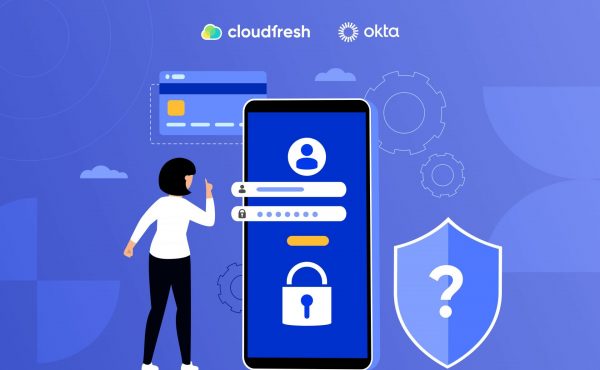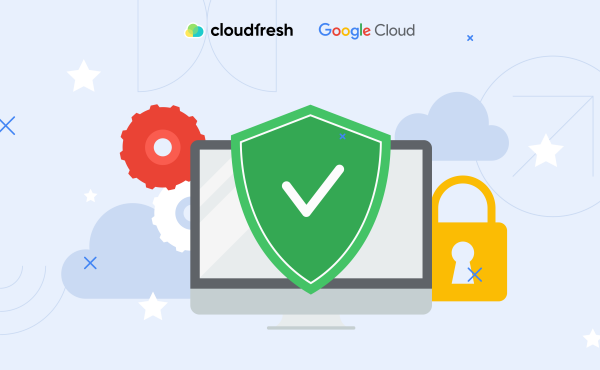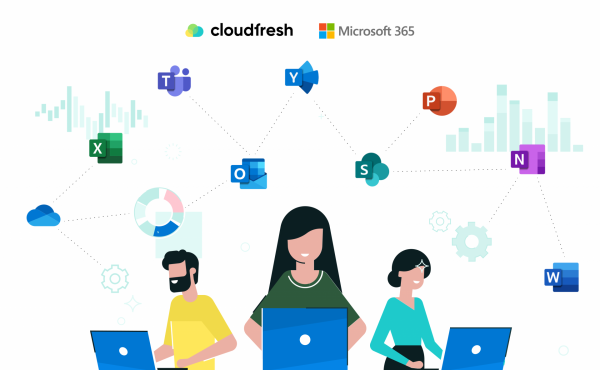How to Choose the Best Security Questions for Maximum Safety
CIAM: Not a Triad, But a Quartet
- What Is Customer Identity and Access Management?

- Benefits of Customer Identity Management

- CIAM Solutions: To Build or Not to Build?

According to IBM, an average financial loss incurred due to a data breach amounted to nearly US$4.5 million last year. Google Cloud’s Threat Horizons report for the first half of 2024 provides further insight: easy-to-guess and non-existent passwords make up more than 50% of initial steps taken to compromise cloud instances.
At the same time, the share of leaked credentials leading to illicit access stands at almost 3%. What’s the link between the two, you may ask? Well, both risks can be substantially reduced if an organization implements cloud IAM solutions, which stands for Identity and Access Management.
What Is Customer Identity and Access Management?
Customer Identity and Access Management is built atop the same principles as IAM. The main difference is that it focuses on external users — such as clientele, vendors, and partners — instead of employees. Besides, companies need to pay extra attention to making every interaction user-friendly, which is not always the case with IAM.
In essence, CIAM is based on three pillars, which are authentication, authorization, and identity management itself. Let’s take a closer look at each of them.
Authentication
Authentication means checking if the user who tries to sign in to your app, portal, or online service is indeed who they claim they are. This is a basic step to keep bad actors from viewing or stealing sensitive data — think of a shipping address, SSN, bank details, or any other type of information that is personally identifiable.
The most common way for a user to authenticate is via a username and a password. To bolster safeguards, businesses can consider turning on the SSO and MFA options.
Authorization
Once the user has logged in, authorization takes center stage. It determines which particular resources the user should be able to access and when dictated by role-based and attribute-based controls.
Imagine an e-commerce store; depending on its business model, it might authorize customers to view product details and add to a cart but only place an order if a valid credit card is provided.
Identity Management
This pillar encompasses everything your administrators do in terms of setting user access permissions and enforcing security policies.
Identity management also refers to the customer’s ability to manage their own identity (e.g., updating name, email address, and password), data (e.g., accessing, rectifying, or erasing their personal data as per GDPR and CCPA), and preferences (e.g., opting in/out of newsletters and marketing messages).
Benefits of Customer Identity Management
In this section, we break down some of the most significant business advantages of customer identity management solutions.
Growth through Improved CX
Enabling you to integrate social media logins, CIAM allows customers to register and log in using their favorite social media accounts, which simplifies the onboarding process and removes certain signup barriers. In addition, Customer Identity and Access Management can help you build customer profiles based on preferences, purchase history, and interactions. You can later leverage this data to personalize content, recommendations, and messaging — all to create a more engaging experience.
Empowering a frictionless customer journey from initial discovery to brand loyalty, CIAM facilitates efficient lifecycle management, translating to improved acquisition rates, higher conversion numbers, and stronger customer retention. The bottom line? The top-line revenue growth.
Quicker TTM through Dev Efficiency
With CIAM’s built-in security features like secure logins, access control, and data encryption, your developers don’t need to reinvent the security wheel for each and every application. At the same time, pre-built components and standardized APIs allow them to quickly prototype new features involving user authentication and authorization, which means faster iteration and testing prior to full-scale development.
Ultimately, Customer Identity and Access Management takes the burden of identity management off your shoulders, freeing you to focus on innovation. Thanks to that, you can put your money into revenue-generating apps and services that truly differentiate your offerings in the market.
Lowered Costs through Better Compliance
CIAM can offer self-service portals where customers easily access, download, and even delete their personal data. That way, your IT teams no longer have to manually fulfill DSARs, saving you both financial and time resources.
In a broader sense, Customer Identity and Access Management systems provide detailed audit trails that track user access to customer data, making it easier to show compliance with regulations and reply to investigations or audit requests.
CIAM Solutions: To Build or Not to Build?
Suppose your organization has numerous departments devoted solely to the matters of data security, data privacy, and regulatory compliance, and you have a dedicated engineering team with the necessary skillsets and expertise as a bonus. In that case, you should definitely consider designing your own CIAM solution.
If you want to concentrate on core areas of business and delegate Customer Identity and Access Management to a trusted provider who offers countless industry-leading integrations and aims to empower rather than restrict you, it would be a good idea to turn to Okta identity management.
Cloudfresh is a certified partner rendering Okta professional services. Order today using the form below and get special conditions.















